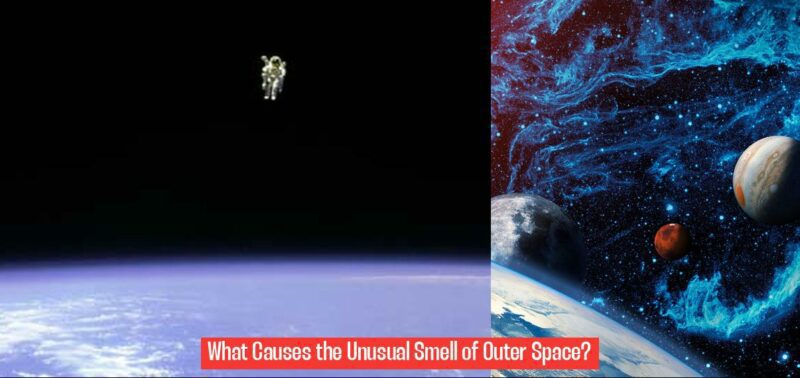Why Does Outer Space Smell So Strange?
Have you ever wondered what outer space smells like? It’s a question that has fascinated scientists and space enthusiasts for decades, and the answer is surprisingly intriguing. While we can’t exactly go out and take a whiff of the cosmos, astronauts who have ventured into space have described a distinct and peculiar odor that clings to their suits upon their return. This mysterious scent has been likened to a variety of earthly smells, from gunpowder to burnt toast to even a touch of raspberries and rum.
The Smell of Space: A Cosmic Enigma
Astronauts who have had the privilege of experiencing spacewalks often describe a strong metallic smell that permeates their spacesuits and equipment. This unique odor, often referred to as the “smell of space,” is unlike anything found on Earth. It’s a sensation that lingers in their nostrils long after they’ve removed their helmets, a reminder of their time amongst the stars.
One astronaut, Greg Chamitoff, recounted his experience saying, “There’s one smell up here that’s really unique though…we just call it the smell of space. There’s this really, really strong metallic smell and I don’t know exactly what it is.” While astronauts can’t smell it while they are on a spacewalk because their suits mask the scent, once they return to the space station and remove their helmets, the distinct smell of space becomes apparent.
The origin of this peculiar smell has puzzled scientists for years, and while a definitive answer remains elusive, recent research has shed light on the potential culprits.
Unraveling the Mystery: Polycyclic Aromatic Hydrocarbons
Dr. Louis Allamandola, a former director at NASA Ames Astrophysics and Astrochemistry Laboratory, suggests that polycyclic aromatic hydrocarbons (PAHs) are likely the main contributors to the strange odor of space.
PAHs are incredibly stable molecules that are found throughout the universe, from the dusty clouds of the Milky Way to the soot in our chimneys. They are formed when stars die and release heavier elements like carbon and nitrogen into space. These robust molecules can survive harsh interstellar environments, traveling vast distances and leaving their unique scent in their wake.
Allamandola explains that space is an ultra high-vacuum, and while it might seem impossible for humans to smell anything in such a void, the presence of PAHs changes the equation. Imagine a vast expanse of space filled with these molecules, and you can start to understand how a faint but distinct smell could arise.
A Cosmic Cocktail of Smells: The Milky Way’s Aroma
The Milky Way galaxy is a vast and diverse canvas, teeming with stars, dust clouds, and other celestial entities. The smell of space varies depending on the specific region of the galaxy.
For example, inside those dark lanes and blobs in the Milky Way, known as interstellar dust clouds, the scent might be quite different. These clouds are incredibly cold, and the molecules within them freeze onto dust grains, forming new molecules. The resulting aroma could be a bizarre mixture of water ice, ammonia, and formaldehyde, like a cosmic ice cream shop with a touch of morgue-like air.
Beyond the Milky Way: A Whiff of Rotten Eggs
While PAHs are believed to contribute significantly to the smell of space, there are other celestial objects that could also contribute to the unique olfactory experiences in the vastness of the cosmos. For instance, Jupiter’s moon Io is known for its volcanic activity, spewing sulfur dioxide into space. This could result in a smell reminiscent of rotten eggs, adding another layer of complexity to the cosmic aroma.
Space Station Smells: A Blend of Combustion and Oxidation
The space station, orbiting the Earth at a relatively low altitude, is still exposed to a faint atmosphere containing oxygen. This interaction leads to a phenomenon known as oxidation, where materials on the station, particularly those facing the direction of travel, react with the oxygen, creating a kind of combustion. This process is likely responsible for the metallic scent that astronauts experience when they return from space.
A Cosmic Tapestry of Scents: From Charcoal to Raspberries
In the grand scheme of things, the smell of space is a complex tapestry woven from the various elements and processes that occur in the cosmos. From the charcoal-like scent of PAHs to the sulfurous stench of volcanic activity and even the sweet, fruity aroma of ethyl formate (the compound that gives raspberries their flavor), the universe offers a variety of olfactory experiences.
A Glimpse into the Origins of Life
The presence of PAHs in space is not only intriguing from a sensory perspective but also holds immense significance in the study of the origins of life on Earth. These hydrocarbons are considered potential building blocks for life, and they have been found in ancient meteorites and even in cometary material.
The Future of Space Exploration: A Sensory Odyssey
As we continue to explore the universe, the study of the smells of space will undoubtedly become more sophisticated. Scientists are developing new techniques to analyze and identify the complex molecules that contribute to these unique aromas, providing us with a deeper understanding of the universe and its origins.
The next time you gaze up at the stars, remember that the vast expanse of space is not just a silent and empty void but a place filled with a myriad of smells, each telling a story of cosmic creation, evolution, and the potential for life beyond our own planet. The smell of space, a testament to the universe’s endless wonders, is a reminder that there is still so much to discover and explore in the vastness of the cosmos.
Why do astronauts describe a strange smell in outer space?
Astronauts describe a unique smell in outer space that clings to their suits upon their return, often likened to a mix of gunpowder, burnt toast, raspberries, and rum.
What is the “smell of space” that astronauts experience?
The “smell of space” is a strong metallic odor that astronauts encounter during spacewalks, a scent unlike anything found on Earth, which lingers in their nostrils even after they remove their helmets.
What has Dr. Louis Allamandola suggested as the main contributor to the smell of space?
Dr. Louis Allamandola proposes that polycyclic aromatic hydrocarbons (PAHs) are likely the primary source of the strange odor in space, as these molecules are found throughout the universe and can survive harsh interstellar environments.
How does the ultra high-vacuum environment of space allow astronauts to smell the “smell of space”?
Despite the vacuum of space, the presence of polycyclic aromatic hydrocarbons (PAHs) allows astronauts to detect the unique scent, as these stable molecules can travel vast distances and leave their distinct smell behind.


